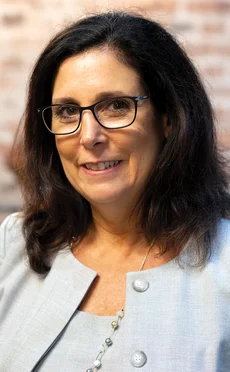This article was paid for by a contributing third party.

SmartStream Goes to Market With Fresh Air

At the Sibos gathering in London in late September, SmartStream finally lifted the veil on the product it had been talking about for the best part of a year: SmartStream Air, an artificial intelligence (AI)-enabled reconciliations platform designed to allow users to manage their reconciliation needs on an ad hoc basis, while simultaneously significantly reducing reconciliations processing and configuration times. Andreas Burner, chief innovation officer for blockchain and AI at SmartStream Technologies and head of the firm’s Innovation Lab in Vienna—responsible for Air’s conception and incubation—confirms that a number of large SmartStream clients have already extensively beta-tested the platform, with some preparing to implement it in a live, production environment. “This is the birth of all our AI and machine learning products,” Burner explains. “We’ve been working heavily in this area for the past 18 months and now we’ve productized it through SmartStream Air—our first real AI product. We have been working with clients on it with their data and it has worked really nicely during our beta tests.”
Burner, who describes SmartStream Air as a “really simple” application, explains that it allows clients to drop large numbers of records into it and, within a matter of seconds, it reconciles the data discrepancies within those files. “The demos show that you can do it within three or four seconds, even though you might have 25,000 records,” he says. “We have tested it on 500,000 records and it’s super-fast.”

When Burner and his team designed the machine learning functionality underpinning SmartStream Air, they specifically focused on speed, accuracy and the imperative that it had to be what he calls “white-box AI”, allowing users to understand how and why results were produced. “That’s really important in the financial industry,” he says.
Reconciliation Hurdles
To fully appreciate SmartStream Air’s value proposition, it helps to frame it in the context of the various reconciliation challenges facing capital market firms. According to Burner, the industry is saturated with large, monolithic platforms that typically support a broad range of reconciliation functions from cash to digital payments, although what SmartStream is now preoccupied with is the growing need for faster, simpler systems that support ad hoc reconciliations and don’t require days or weeks to configure for one-off-type tasks. “We introduced SmartStream Air because it fills the gap for an ad hoc reconciliations system,” Burner explains. “Once a user subscribes, they get their username within an hour or two, and they can immediately start to upload their data. SmartStream Air also allows users to save configurations so that they can do daily recs if they want to.”
Burner confirms that SmartStream has also embedded its AI and machine learning technology within many of its existing products, and that initially they will focus on the most acute operational challenges and clear-cut use-cases. “We always look for the biggest use-cases for our clients,” he continues. “Reconciliation is a big one because there is lots of data, lots of know-how, lots of exceptions, and lots of manual work that needs to be done. Cash and liquidity is also an interesting use-case because the prediction of cash and liquidity is really important for banks. Traditionally, their ability to predict cashflows and liquidity using analytics tools was a real challenge, although now we have machine learning, which is more precise and provides more information.”
Real-Time Functionality
Nadeem Shamim, head of cash and liquidity management at SmartStream, says that the firm’s clients are always on the lookout for technology support around their cash and liquidity functions, not only on an intraday basis, but increasingly in real time too. “In the past, it was a challenge for firms to calculate an accurate position on their nostro accounts for their daily liquidity needs,” he says. “We have been delivering solutions to meet those needs for a number of years. Now, the focus has moved on to looking at cash positions on a real-time basis, a natural progression after the financial crisis of 2007–08.”

Another issue facing industry participants with respect to their cash and liquidity management is accurately forecasting when payment flows and receipts are likely to occur during the course of the day, as alluded to by Burner. Firms might know that payments and receipts will occur on a particular day, but figuring out when exactly they will transpire during the day in question has always involved a lot of guess-work and experience, an issue SmartStream is now addressing. “We have been using machine learning and predictive analytics in a proof of concept to predict when actual payments will settle and delivering a timestamp for each forecasted flow,” Shamim explains.
The benefit accruing to clients on the back of SmartStream’s real-time cash and liquidity functionality allows them to observe and maintain the integrity of their capital buffers and the costs incurred if and when those buffers are breached. “If you are able to predict where the trough will be, you can manage the flow of payments and maintain the balance within the buffer,” Shamim says. “If my prediction is that all my payments are going out at 11:00am, for example, and all my receipts are likely to come in three hours later, is it necessary for me to make all the payments at the earlier time? Could I control the flow and stay within the buffer instead of leaving a large available balance in the account to meet my payment obligations? Continuous breaches of my intraday lines could trigger the Prudential Regulatory Authority requiring me to increase the buffer, which in turn means increased costs.”
Free Solo
SmartStream is synonymous with reference data, thanks largely to the Reference Data Utility (RDU), which was launched a decade ago and is designed to provide capital markets firms with accurate and timely securities reference data. The RDU’s initial joint-venture structure included three large investment banks—Goldman Sachs, JP Morgan and Morgan Stanley—although Linda Coffman, vice president of product management for the SmartStream RDU, confirms that it is now wholly owned by SmartStream. “I think it was an important initial step to have the utility launched by the original stakeholders, but as we began to evolve and the products matured, it was a natural step to be fully owned by SmartStream,” she explains. “This move allows us to add some cohesiveness between the different products within SmartStream, including the Innovation Lab, AI and our data quality program. It also allows us more flexibility to pursue products that can benefit other segments of the market.”

The primary focus of the RDU was initially tier one sell-side institutions looking for reference data support for their listed derivatives operations, which at the time was a significant challenge for them, given the dearth of readily available and reliable securities reference data. According to Coffman, SmartStream is now rolling out support for additional asset classes—equities and fixed income—a move likely to increase interest in the RDU from smaller players, including the buy side. Improving the quality of the data residing within the RDU using AI technology is also a significant focus for the firm. “We have a great data quality program already running in the RDU,” Coffman explains. “We have a team devoted to ensuring the best data in the market. Now that we are part of SmartStream, Stephen Koch, SmartStream’s global head of data quality, has started mapping out plans for how we can leverage our SmartStream AI expertise and apply it to our data quality program.”
Driven by Data
According to Coffman, a case study carried out by SmartStream found that one tier one bank was able to reduce its exceptions by 85% by using the RDU. “Clearly, data quality is key to what we do,” she says. “We’re a data-driven company and so data is one of our foundations.” Coffman explains that a key business driver for SmartStream is reducing operational and technology costs for its clients, which it achieves by providing what she calls a “complete data management service,” including feed and exception management support. “Time-to-market and scalability are other factors, although data quality is by far the main reason why we get initial phone calls from firms—they’re either experiencing data quality issues or their data is incomplete,” she says.
Sponsored content
Copyright Infopro Digital Limited. All rights reserved.
You may share this content using our article tools. Printing this content is for the sole use of the Authorised User (named subscriber), as outlined in our terms and conditions - https://www.infopro-insight.com/terms-conditions/insight-subscriptions/
If you would like to purchase additional rights please email info@waterstechnology.com
Copyright Infopro Digital Limited. All rights reserved.
You may share this content using our article tools. Copying this content is for the sole use of the Authorised User (named subscriber), as outlined in our terms and conditions - https://www.infopro-insight.com/terms-conditions/insight-subscriptions/
If you would like to purchase additional rights please email info@waterstechnology.com